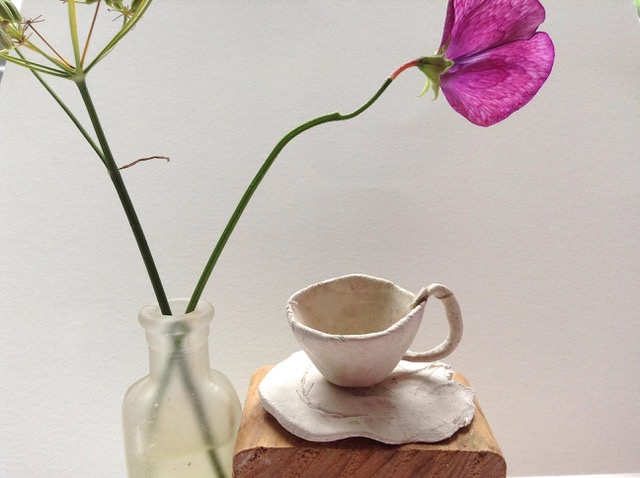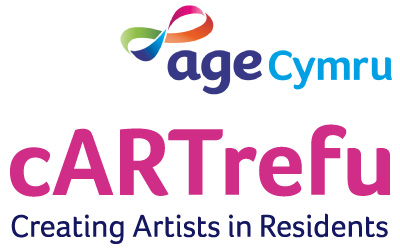
Inspired by tea ceremonies of Japan, enjoyed by the Welsh tea drinkers of Britain. Tea is a moment of reflection, connection and a general soul warming exchange and a quenching of thirst.
This activity is designed to build trust by starting with a familiar ritual, the sharing of tea and biscuits if you fancy.
Once the tea is poured, milked and sugared, discussions of tea, ceremony, the flowers in the centre of the table, the shapes, the colours, smells and textures can take place.
The paper and ink is readily set up around the table.
Ink drawing and mark making are one of the easiest and fluid ways of making work. By using one colour per drawing and asking the participant to pick out shapes, lines and gestures of the flowers and vase centre table and fill their paper however they see fit. They may want to focus on it as a still life and draw literally what they see, they could make a pattern or focus in on one section. This allows for a more dance like action. Swooping lines or just dotting the leaves, petals and stems.
Pauses for thoughts and sipping of tea we can reflect on the works, as a group you can take inspiration from other drawings around the room and find time to giggle, praise and keep the activity light hearted. This exercise is open to ritual and to those less keen on the drawing element or maybe not as able as other participants, self drying clay can be used. With this the participant could mould flowers, drinking vessels or tea cups.
The art of flower arranging could also be explored.
I can imagine this been adapted to a tea and scone garden event. On a summer’s day sitting outside and drawing from the garden. Maybe include a scone with jam and cream.
Also, the subject matter can change. Many things can become still life and be placed at the centre of the table. Also drawing patterns along to music, images off the tv or other such actions could take place.
Ways to adapt for less able residents:
You could do some flower arranging allowing less able resident to pick a display.
As mentioned in description, self-drying clay proved a good option. Also taking a flower from the vase and physically holding and looking at, just chatting about receiving flowers, growing flowers.
For some residents just sitting and having the interaction with the tea and watching can also be good. The idea of feeling part of the activity by simply being involved and having a cuppa and a chat.
Ways to adapt from group to individual and vice versa:
The same process for group and one to one.
